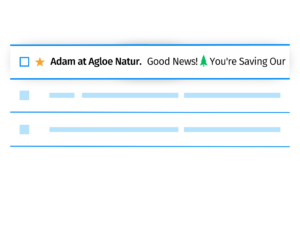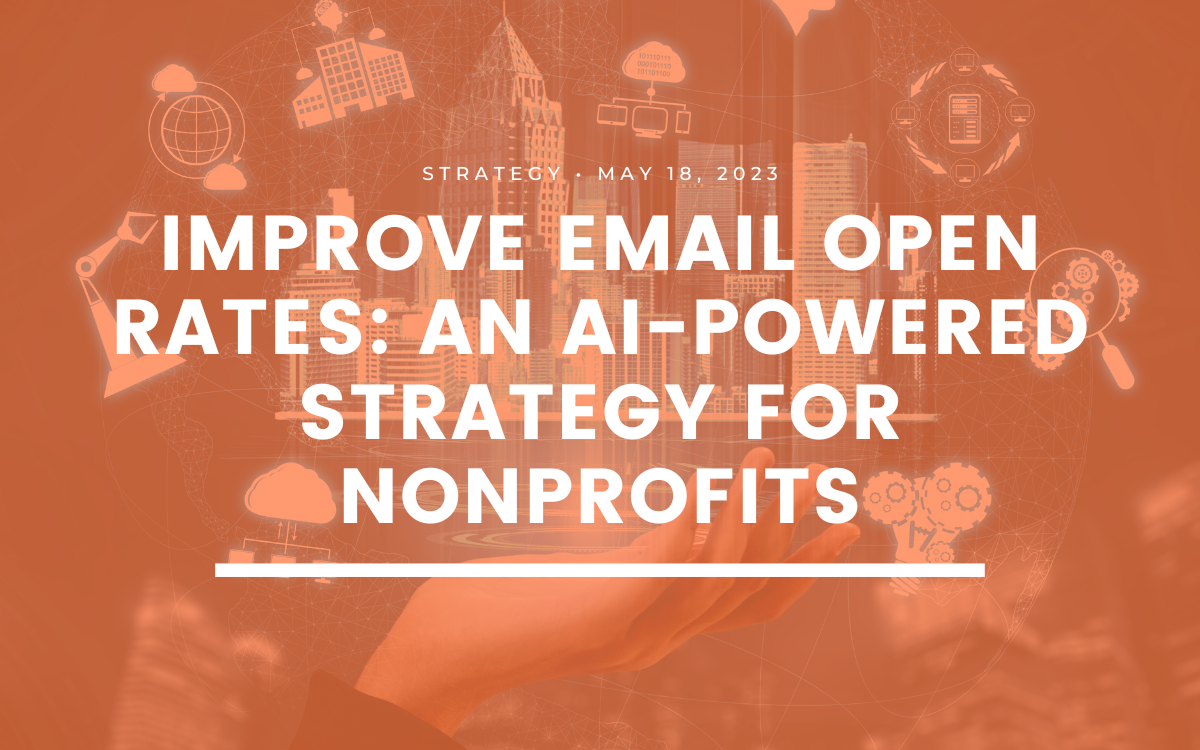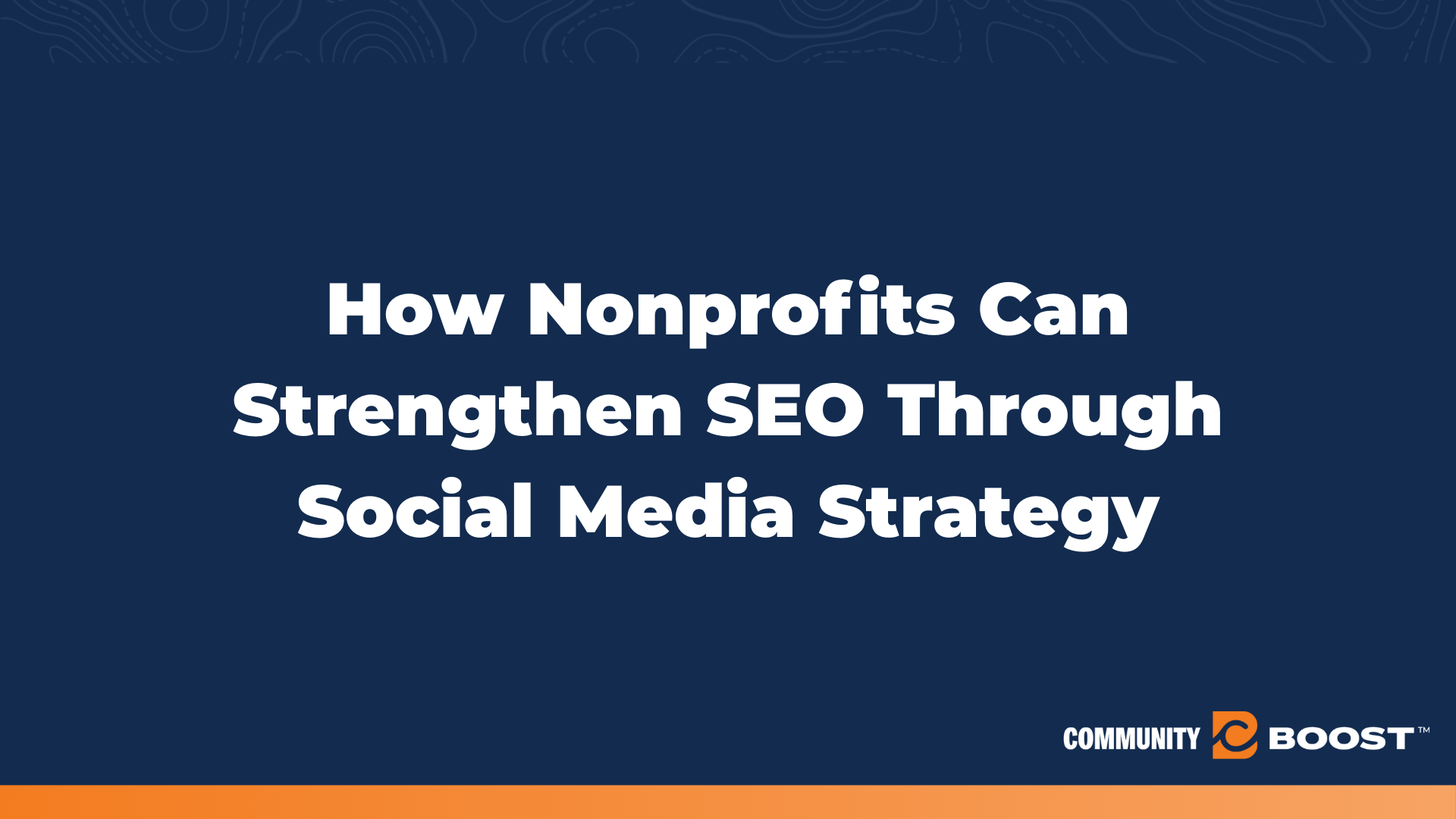Improve Email Open Rates: An AI-Powered Strategy for Nonprofits
6 min to read ✭
Want to improve email open rates for your nonprofit? Here’s some good news: Your organization is doing better than for-profits, but there’s always room for improvement.
Nonprofit email open rates are about 7% higher than corporate companies, which means you get more eyes on your messages than, say, Amazon or other big for-profits. But that doesn’t mean you shouldn’t work to improve email open rates at your nonprofit.
Inboxes are increasingly crowded, and standing out among the hundreds of emails your supporters receive every day continues to be important. That’s why it’s so crucial to nail your email subject lines—they have a huge impact on whether or not someone will open your message to see what you have to say. But how can you reliably write subject lines that catch peoples’ attention?
New research can help! Neon One’s new report on nonprofit email includes fascinating insights about the words, phrases, and feelings to use (or avoid using) in subject lines. Let’s take a look.
Wait, Wait: How’d We Get Here?
Before we dive into the data and talk about how to improve your email open rates, it’s important to understand how we identified these strategies. During the research phase for this report, we realized that we needed a way to analyze a huge set of subject lines.
We partnered with Cherian Koshy, founder of Nonprofit Operating System, to analyze the subject lines of more than 37,000 different email campaigns and identify which subject lines worked, why they prompted great engagement, and what that performance reveals about donors.
Koshy used an AI system (OpenAI’s Davinci-003 model) to conduct a sentiment analysis of email subject lines. The system identified 27 different emotions represented in the data set, then identified which emotions, words, and phrases prompted the best engagement.
Here’s what the data says:
Positive Sentiments Improve Email Open Rates
You may have read that donors and other supporters respond best to positive, uplifting appeals and updates. Now, an artificial intelligence system has confirmed that to be true! Koshy’s analysis revealed that the top-performing subject lines included one of five emotions: Relief, Gratitude, Pride, Excitement, or Optimism.
But what does that mean? Here’s an explanation of how each sentiment looks in a subject line:
Relief
This was the top-performing sentiment category! This emotion prompted an average open rate of 40%. As a general rule, subject lines that included a sentiment of relief referenced completed work or safety. Examples include something like “Community Recovery After Hurricane Ian” or “Coping with Climate Change.”
Gratitude
This is pretty straightforward! “Thank you” and similar messaging inspired lots of opens—the average open rate for emails with this type of subject line was around 39%.
Pride
Subject lines in this group generally involve instilling a sense of pride in the recipient. Examples of subject lines in this category include “Your Support for [Nonprofit]” or “End of Year Update for Members.” Emails in this category prompted an average open rate of 37%.
Excitement
You may have heard that using exclamation points in subject lines can improve performance. It works! Emails in this category typically involved use of exclamation marks, like “You’re Invited!” or “You’re Great!” Emails with subject lines that prompted feelings of excitement inspired open rates of about 39%.
Optimism
This category included subject lines like “What’s Old Is New” or “Working Together for Our Future” and got an average open rate of 37%.
Note that none of the negative emotions inspired high open rates (Annoyance, Disapproval, Disappointment, Anger, Sadness, Confusion, Disgust, Fear, Remorse, Embarrassment, Nervousness, and Grief). If you want to reach more of your audience through email, focus on using positive language in your subject lines.

Words to Use (and Avoid) In Your Subject Lines
Using email subject lines that imply positive emotions improves email open rates more than those with negative sentiment (or no real emotional sentiment at all). Let’s take it a step further: What specific words and phrases impact performance?
Words to Use That Improve Email Open Rates
The AI system revealed four words that had a positive impact on open rates. Here’s what they are and how they performed:
- “Support” had a +307% impact on open rates
- “Survey” had a +200% impact
- “Donate” had a +194% impact
- “Tuesday” had a +176% impact
We love that last word: How often do you think nonprofits are sending emails with the word “Tuesday” in the subject lines? Most of those messages are almost certainly associated with GivingTuesday campaigns, which is a great indicator that donors and other audiences are interested in reading about (and supporting!) those appeals.
Words to Avoid
Koshy discovered three words that had a negative impact on open rates, too, including:
- “Reminder” (-308% impact)
- “Member” (-224% impact)
- “Meeting” (-213% impact)
Now, remember, these aren’t words you should never use in your subject lines. After all, one of the top-performing subject lines was written to prompt a sense of pride in a nonprofit’s member base. But use these words carefully! And, if you’re looking to absolutely tank your open rates, send an email with the subject line, “Remember: Member Meeting.”
Bonus: Words That Helped Click-Through Rates
Some words impacted click-through rates (CTRs), too. What can you learn from these words?
- “Issue” (+58% impact on CTR)
- “News” (+48% impact on CTR)
- “National” (+40% impact on CTR)
The ones that had a negative impact included “Day” (-33% impact on CTR) and “Meeting” (-26% impact on CTR). The word “meeting” is on the list of words that negatively impact both open rates and click-through rates, which we love: Nobody likes meetings!
One of our favorite findings was how the word “newsletter” impacted email performance. A common best practice in the for-profit world is never to use that word in a subject line. While it wasn’t in the top words that impacted open and click-through rates, it did have a positive influence on email engagement.
Emails that included “newsletter” in the subject line had a 33.09% open rate and a higher average CTR (7.42%) than those that didn’t (3.19%). Your audience wants to read your newsletter!
How to Use This Research to Improve Email Open Rates
When we look at Koshy’s AI-driven analysis, we see that subject lines with positive sentiments perform better than those with negative sentiments. We can also identify some words that hurt both open and click-through rates. With that in mind, your challenge is to write subject lines that spark positive feelings in your readers. But where do you start?
This insight isn’t a set of hard and fast rules. Use this research as a guideline while you experiment with what works for your particular audience.
If you can, try to include words like “support,” “survey,” or “donate” in your emails’ subject lines. Don’t force it, though: Including a high-impact word when it’s not appropriate can come off as awkward or unauthentic.
More importantly, think about the emotions and feelings your subject lines convey to your readers. How do you feel when you read your subject line? Do you feel relieved? Proud? Thankful? Excited? When you send yourself a test version of your email, does the subject line catch your eye when your test lands in your inbox?
Test your subject lines with others, too! Send a test to a colleague or, better yet, a friend outside your organization. How does it make them feel? Would they open your email?
If you have the time and resources, you can send an A/B test of the same email but with different subject lines. What works best with your unique audience? How can you use their response to write even more compelling subject lines in the future?
Keep iterating on your subject lines! If you notice that your audience responds very well to feelings of pride, focus on writing future subject lines that make them proud of their involvement. If the word “Member” has a positive impact on your engagement rates, use it in future messages. If a word that usually improves open rates—like “survey,” for example—doesn’t work with your audience, that’s okay!
Use data to guide you, but don’t feel obligated to adhere to tactics that don’t work for your unique community.
Feel-Good Subject Lines Increase Open Rates
An AI system’s analysis of thousands of subject lines confirms what nonprofits have long suspected. Positive sentiments improve email open rates. When a reader sees an email in their inbox that implies feelings of relief, gratitude, pride, excitement, or optimism, they’re more likely to open that message!
You can improve engagement further by carefully choosing specific words that boost interactions (like “support,” “survey,” and “donate”) and avoiding certain words (like “reminder,” “member,” and “meeting”). You can use this framework to start experimenting with the subject lines you send to your own community, track your results, and learn even more about the words, phrases, and feelings that are most effective for them.
Discover More Tactics for Creating Engaging Emails
These findings are only a fraction of the data included in The Nonprofit Email Report: Data-Backed Insights for Better Engagement. It also covers performance benchmarks (including overall industry averages and benchmarks specifically for small and large organizations), additional ways to improve email open rates, tips for writing compelling preview text, strategies for writing compelling email copy, and an analysis of the most compelling email of 2022. Grab your copy here!





